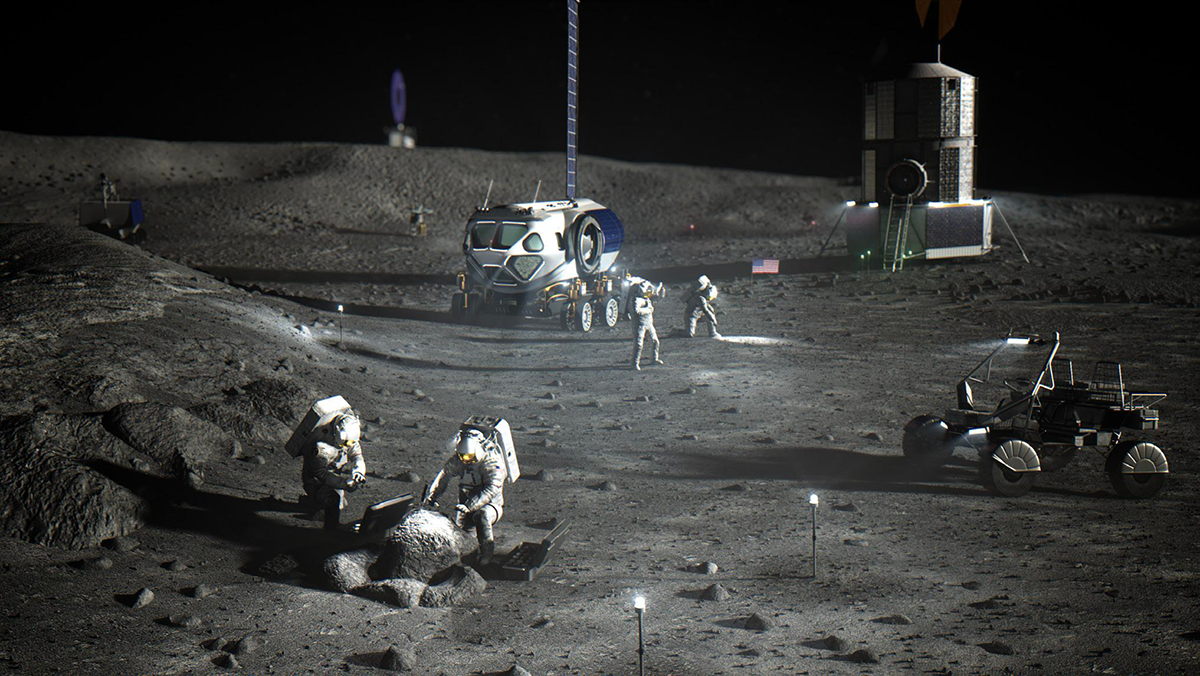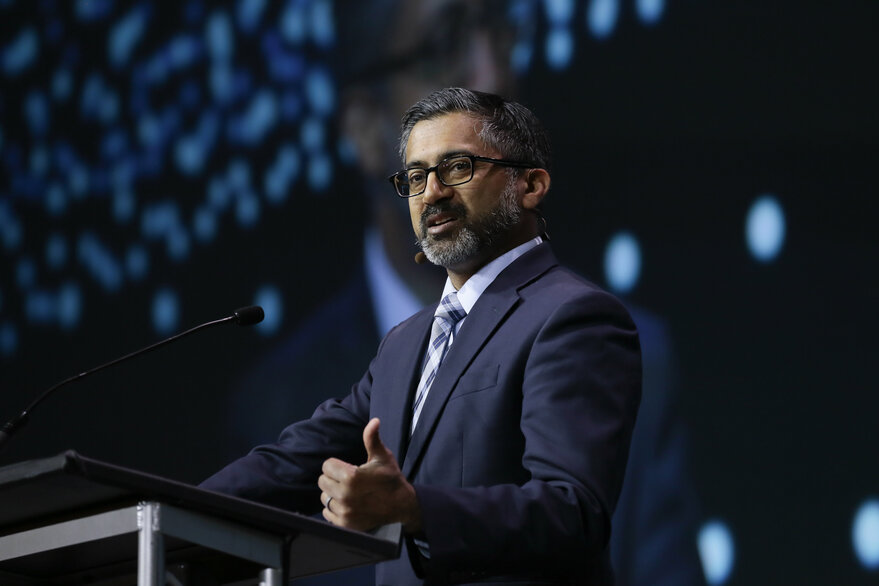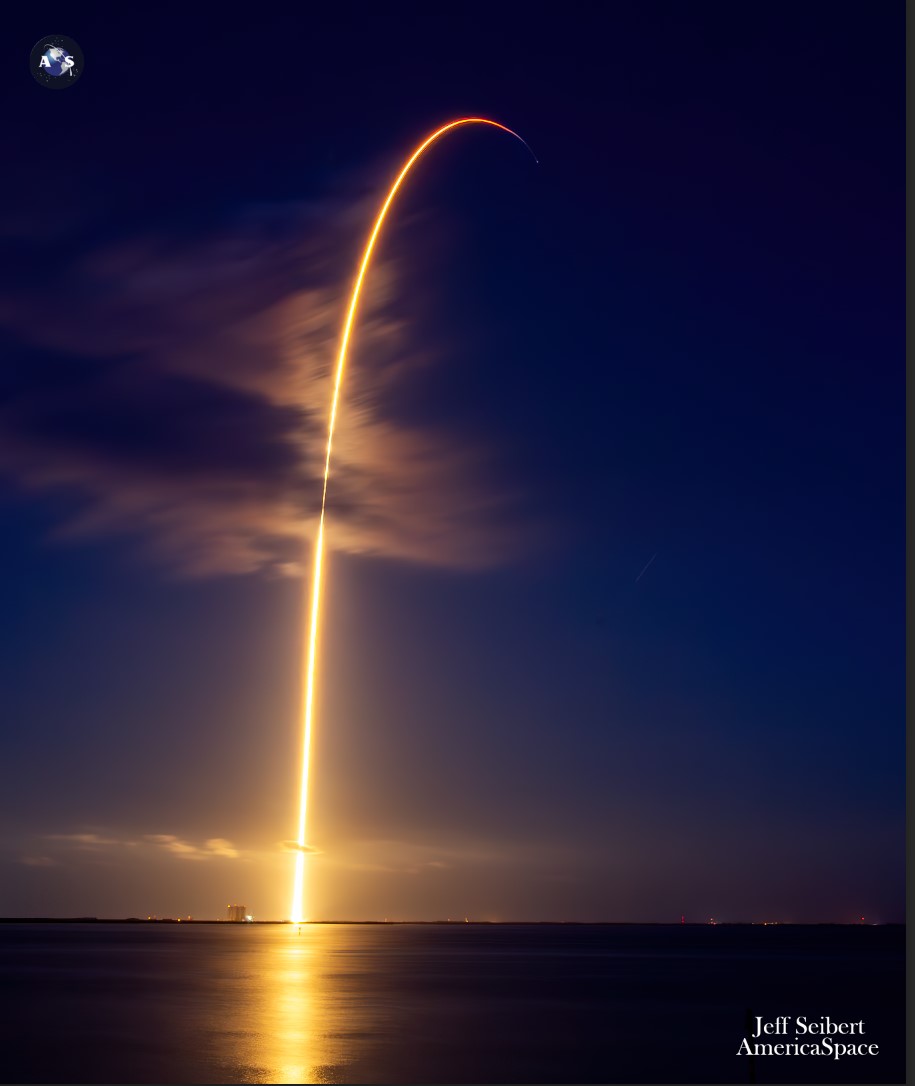
Despite forecasted cloudiness over the Space Coast in the coming days, SpaceX is targeting Wednesday evening for its next Starlink-carrying Falcon 9 mission, as a vigorous April launch campaign continues. Weather is expected to be about 90-percent-favorable for both Wednesday’s 5:26 p.m. EDT opening launch attempt and Thursday’s 5:05 p.m. EDT backup opportunity to get a 12-times-flown booster airborne for the 39th Falcon 9 flight of the year and the eighth so far this month.
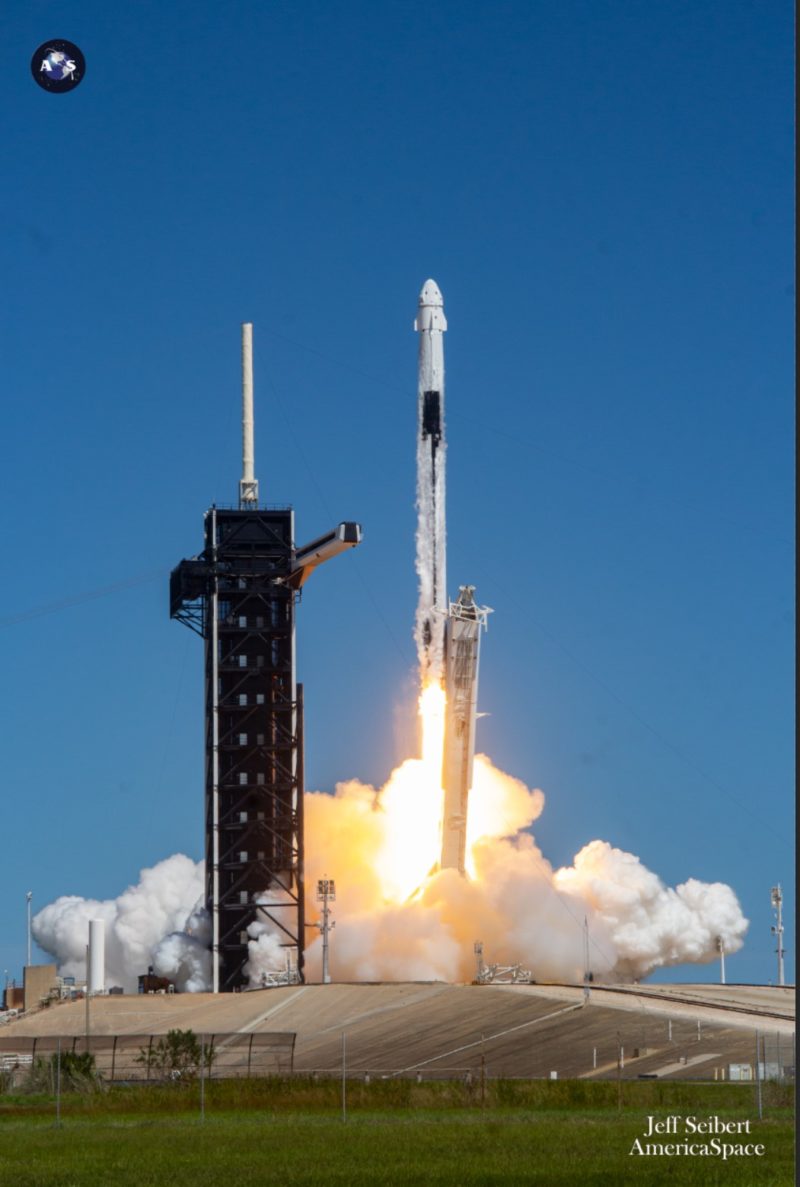

“A surface ridge of high pressure extending from the Central Atlantic to the Florida peninsula will remain largely in place the next several days as a series of systems pass by well to the north,” noted the 45th Weather Squadron at Patrick Space Force Base in its L-1 update, issued Tuesday. “While moisture in the lower atmosphere will be limited and shallow, variable upper-level cloudiness is expected to spill over a ridge centered across the Gulf of Mexico and make its way into Florida.
“At this time, the greatest extent of this cloudiness,” it added, “is expected Wednesday night into early Thursday between launch opportunities.” Both attempts carry a slight risk of violating the Thick Cloud Layers Rule at altitude.
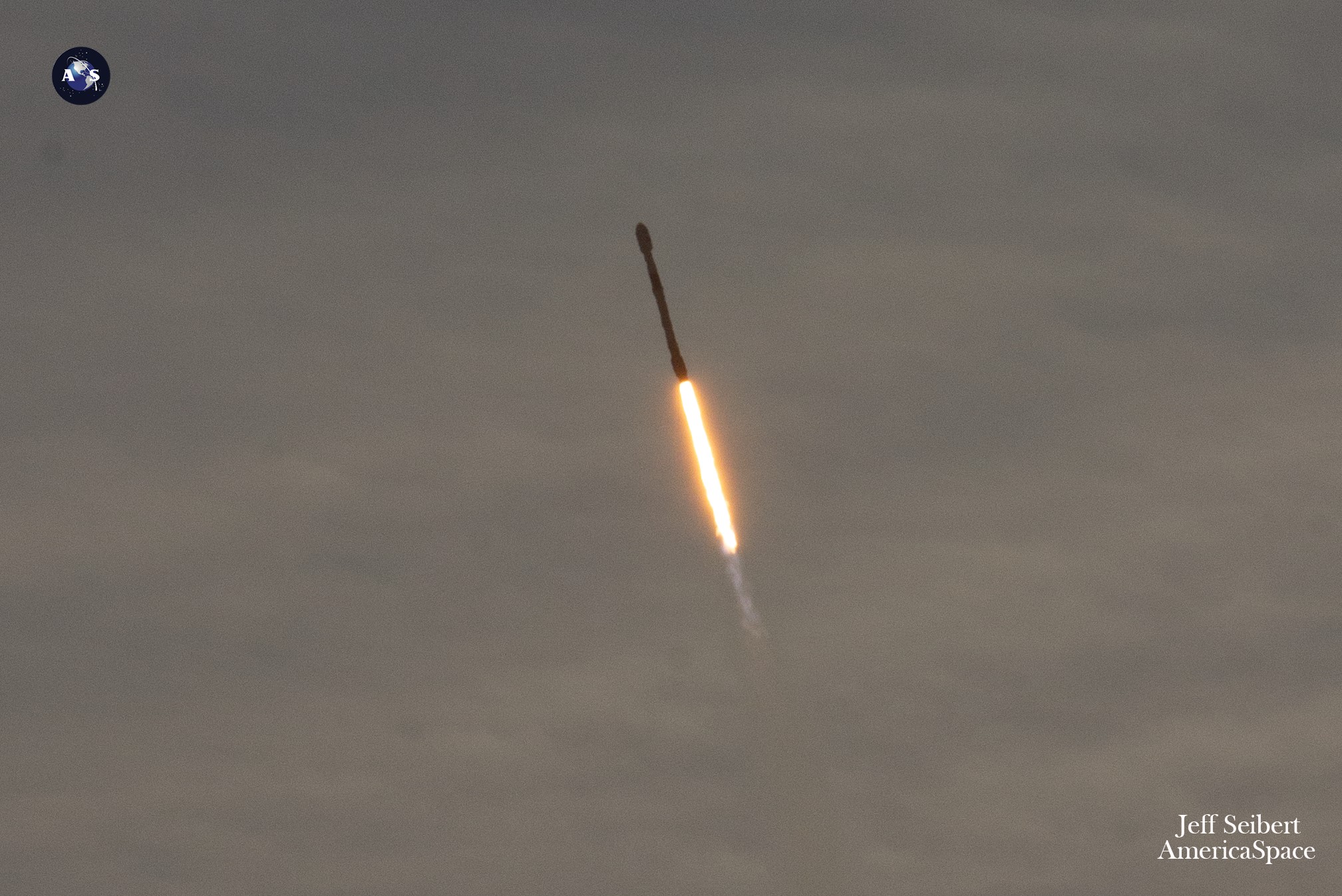

In readiness for launch, the Autonomous Spaceport Drone Ship (ASDS), “Just Read the Instructions”, departed Port Canaveral on Sunday afternoon, bound for a recovery location about 380 miles (600 kilometers) offshore in the Atlantic Ocean. And late Tuesday, SpaceX revealed that it was aiming for an expansive, four-hour “launch window” from 5:26 p.m. EDT through 9:24 p.m. EDT Wednesday, followed by a suite of backup attempts opening at 5:05 p.m. EDT Thursday if needed.
Flying this mission from historic Pad 39A at Florida’s Kennedy Space Center (KSC) is B1077, making her 12th launch in only 18 months. Since her maiden outing in October 2022, this booster has deployed nearly 150 Starlink internet communications satellites in five “batches”, as well as crewed and uncrewed missions to the International Space Station (ISS), a pair of geostationary communications satellites for Intelsat and Inmarsat and the sixth Block III Global Positioning System (GPS) navigation and timing satellite—named in honor of aviation pioneer Amelia Earhart, the first woman to fly solo across the Atlantic—on behalf of the U.S. Space Force.
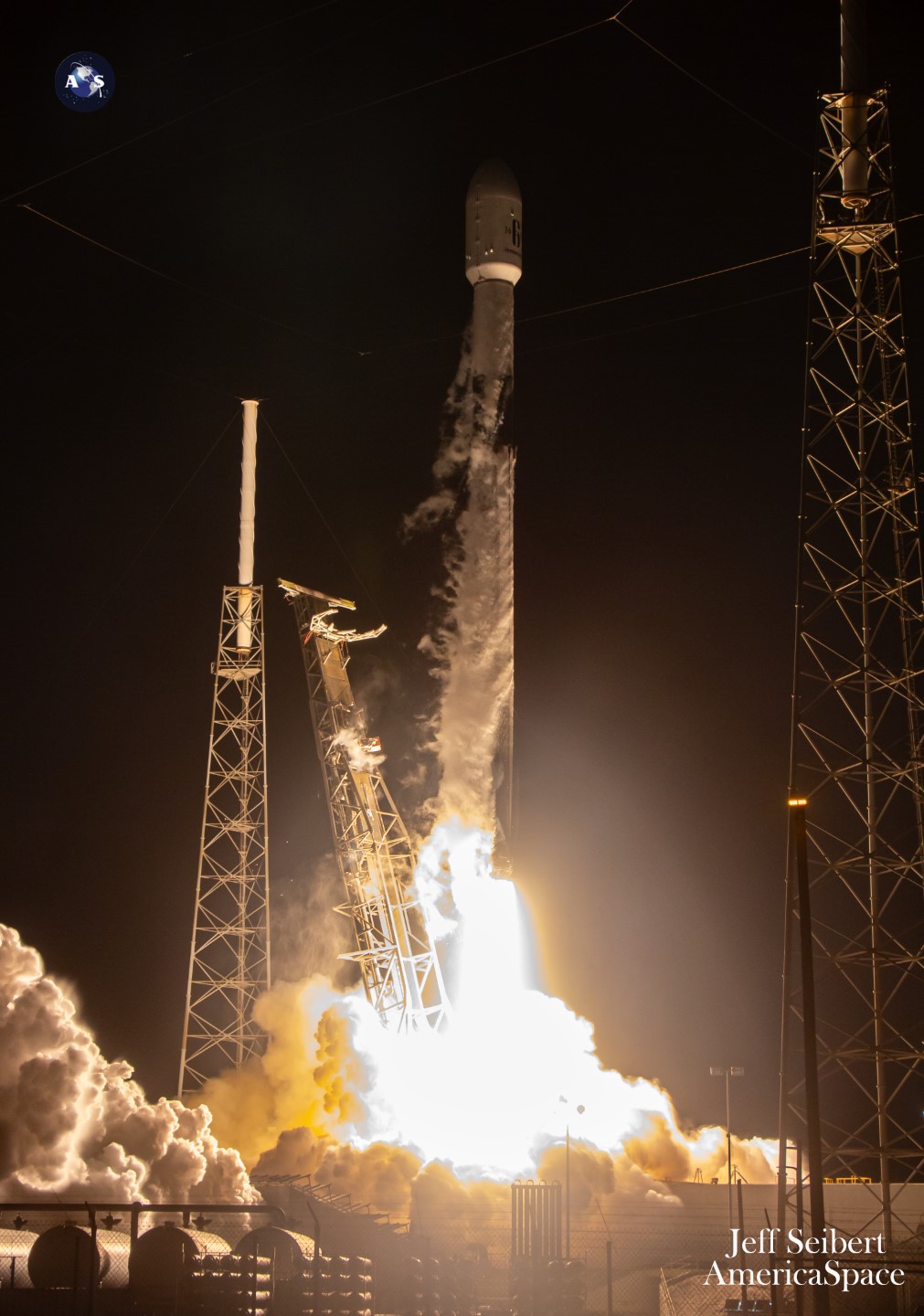

At the end of January, B1077 became the first Falcon 9 to launch cargo missions for both of NASA’s in-service Commercial Resupply Services (CRS) partners. Having already flown a Cargo Dragon to the space station in June of last year, she was first in the SpaceX fleet to also lift a payload-laden Northrop Grumman Corp.-built Cygnus. She becomes the 12th Falcon 9 booster since March 2022 to reach a 12th flight.
For tonight’s mission, B1077 will lift 23 Starlink satellites to orbit, bringing her overall tally of these flat-packed internet communications satellites launched to date to 170. Following ascent, the first stage will return to land on JRTI’s expansive deck while the second stage executes a lengthy “burn” of its single Merlin 1D+ Vacuum engine to boost the Starlinks the remainder of the way uphill, deploying them into space at 65 minutes and 13 seconds into the flight.
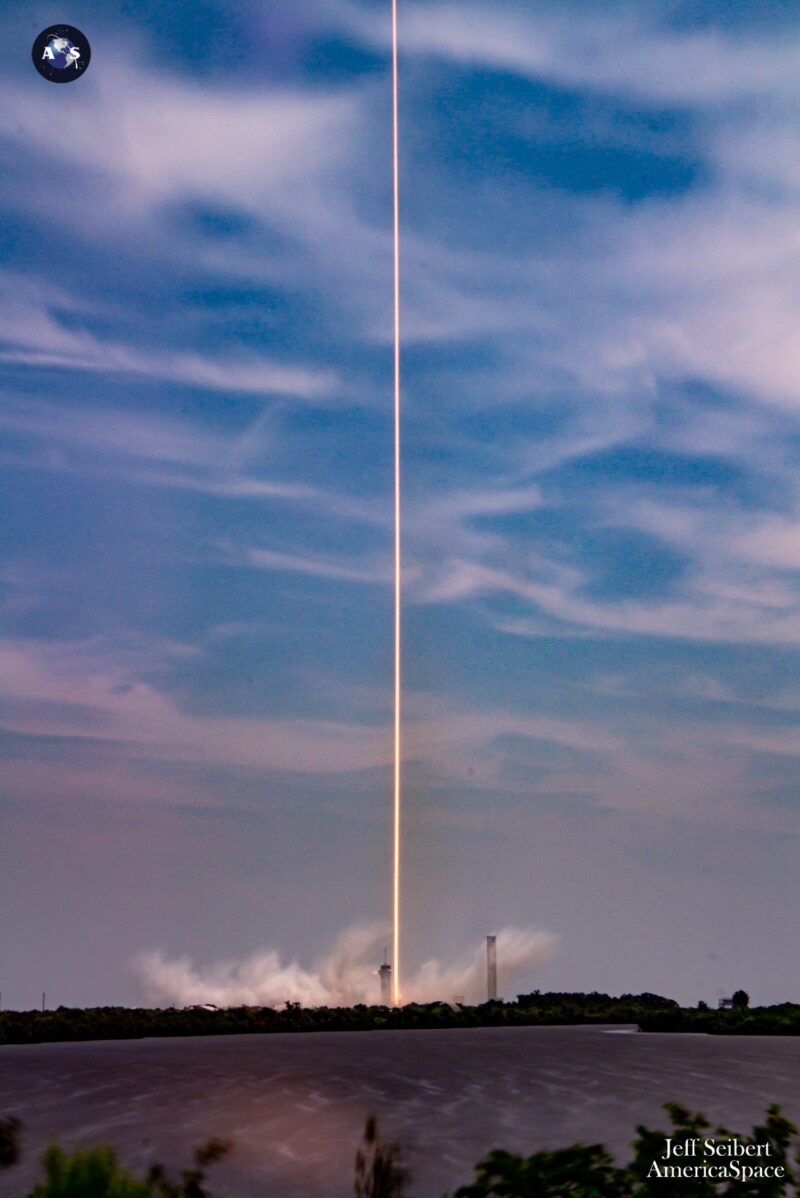

As a network, Starlink enables high-speed and low-latency internet provision to over 70 sovereign nations and international markets in North and South America, Europe, Asia, Oceania and Africa. Earlier this week, the Hawthorne, Calif.-headquartered launch services provider announced that Starlink connectivity is now available in Albania, bringing to 74 the total number of sovereign nations or regions to receive coverage.
The downsized V2 Mini satellites, first flown in February of last year, boast three to four times greater “usable” bandwidth than earlier Starlink iterations. “V2 Minis include key technologies—such as more powerful phased-array antennas and the use of E-Band for backhaul—which will allow Starlink to provide 4x more capacity per satellite than earlier iterations,” SpaceX explained. “Among other enhancements, V2 Minis are equipped with new argon Hall thrusters for on-orbit maneuvering.”
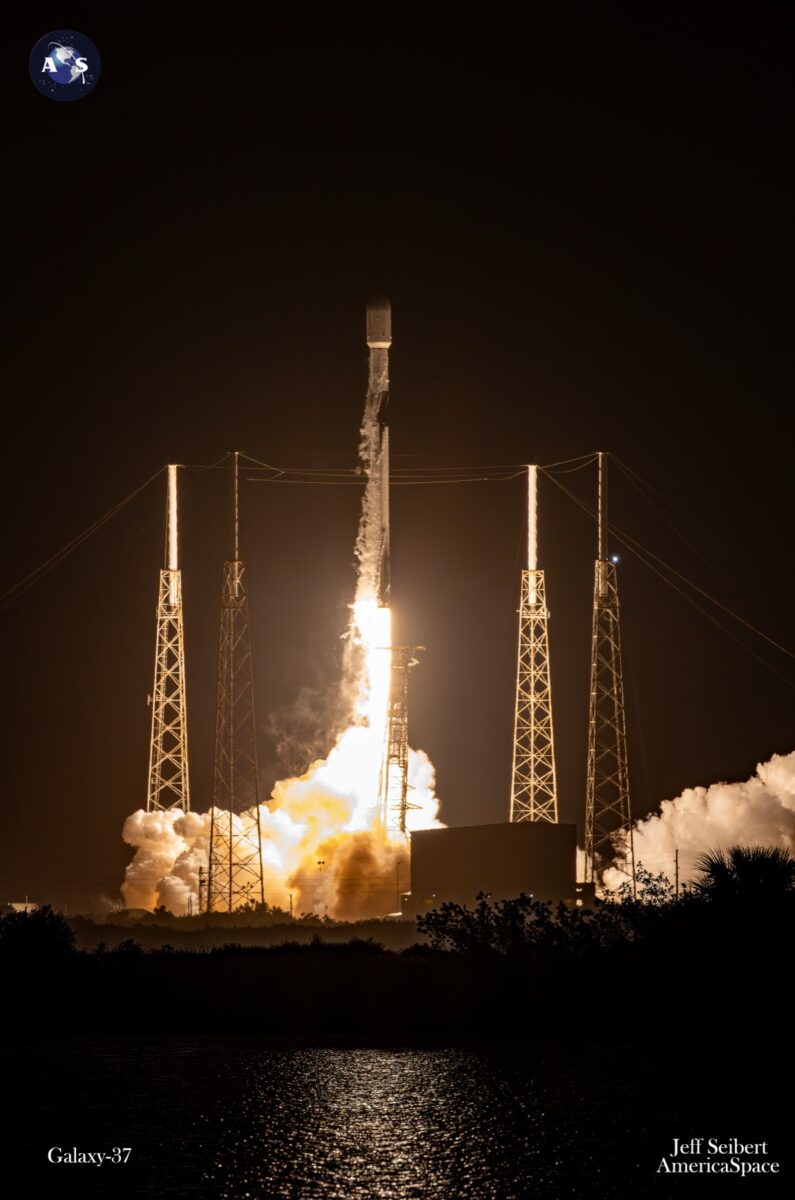

Florida-based intercity operator Brightline adopted Starlink on its trains in 2023, the first passenger rail service in the world to do so. Additionally, El Salvador’s Ministry of Education has begun integrating Starlink capability into its schools to help close the digital divide between urban and remote rural communities and 50 Rwandan schools are now connected via Starlink’s high-speed internet service.
And in January, SpaceX lofted its first six “Direct-to-Cell” Starlinks, which permit mobile network providers to offer “seamless global access to texting, calling and browsing”, whether “on land, lakes or coastal waters”, without the need to change hardware or firmware. Within six days of that first launch, SpaceX engineers sent and received their first text messages via Direct-to-Cell and as of this month Starlink reportedly has about 2.7 million registered subscribers or customers worldwide.
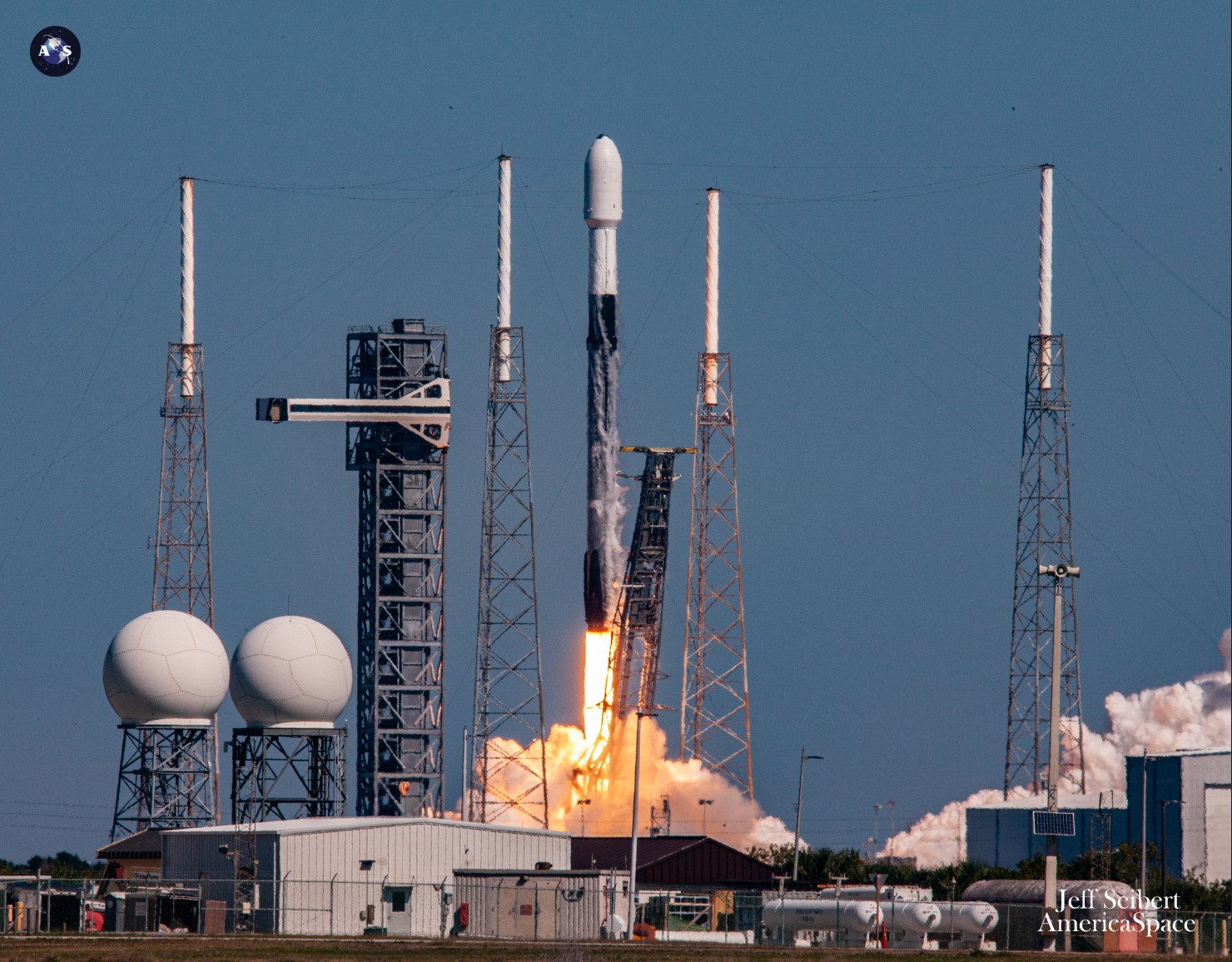

Tonight’s launch marks the 39th Falcon 9 mission in 2024’s 16th week—a breakneck pace that has so far seen 16 boosters including two brand-new cores introduced since the start of the year fly on average once each 2.7 days—and the deployment of over 600 discrete payloads, crewed and uncrewed. Records have fallen like ninepins with the shortest span between pairs of launches and a trio of launches set last month, SpaceX’s first 12-launch calendar month in March and its first 20-times-used booster earlier this week.
April so far has begun with gusto, seven launches having already occurred in the month’s opening half. And with additional flights on the horizon in the coming days, the Hawthorne, Calif.-headquartered organization is aiming squarely for its 40th Falcon 9 mission of 2024 barely outside the year’s first quarter.
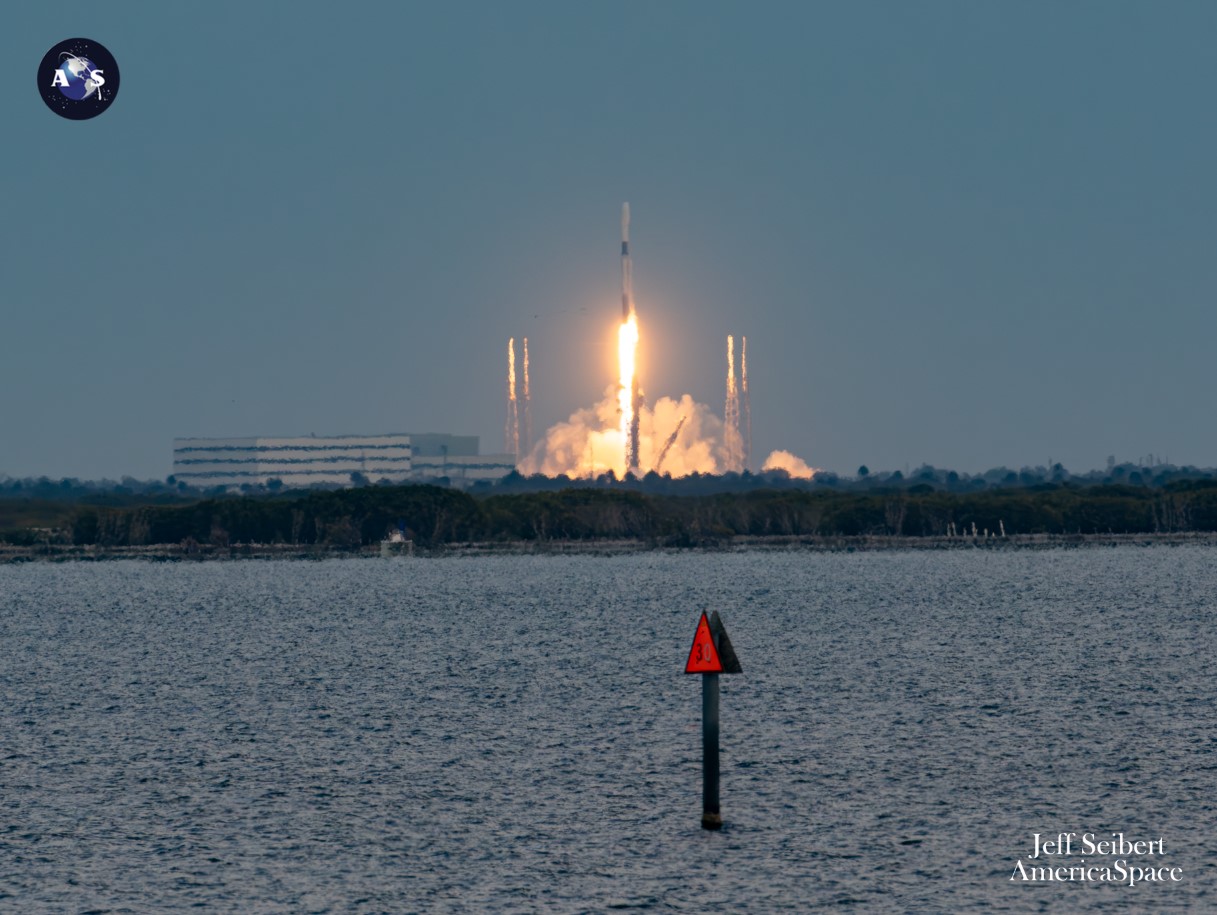

By contrast, even 2023’s record-setting 96-launch year required until late June to reach 40 missions, equivalent to a flight on average every 3.8 days. Current projections on the basis of launching every 2.7 days anticipate 2024 ending on 135 launches, with Elon Musk having made no secret of the fact that he is aiming to fly up to 144 times this year.





